James S Speck
age ~65
from Santa Barbara, CA
- Also known as:
-
- James Stephen Speck
- John C Speck
- Phone and address:
- 722 Monte Dr, Santa Barbara, CA 93110
James Speck Phones & Addresses
- 722 Monte Dr, Santa Barbara, CA 93110
- Goleta, CA
- Somerville, MA
- East Lansing, MI
- Houston, TX
Us Patents
-
Strain-Engineered, Self-Assembled, Semiconductor Quantum Dot Lattices
view source -
US Patent:6583436, Jun 24, 2003
-
Filed:Jun 27, 2001
-
Appl. No.:09/893760
-
Inventors:Pierre M. Petroff - Santa Barbara CA
James S. Speck - Goleta CA
Jo Anna Johnson - Novi MI
Hao Lee - Pasadena CA -
Assignee:The Regents of the University of California - Oakland CA
-
International Classification:H01L 2906
-
US Classification:257 18, 257 15, 257 22, 257 17, 257 14, 438 87, 438184
-
Abstract:A method for growing strain-engineered, self-assembled, semiconductor quantum dots (QDs) into ordered lattices. The nucleation and positioning of QDs into lattices is achieved using a periodic sub-surface lattice built-up on a substrate, stressor layer, and spacer layer. The unit cell dimensions, orientation and the number of QDs in the basis are tunable. Moreover, a 2D lattice can be replicated at periodic intervals along the growth direction to form a three-dimensional (3D) lattice of QDs.
-
Dislocation Reduction In Non-Polar Gallium Nitride Thin Films
view source -
US Patent:6900070, May 31, 2005
-
Filed:Apr 15, 2003
-
Appl. No.:10/413913
-
Inventors:Michael D. Craven - Goleta CA, US
Steven P. Denbaars - Goleta CA, US
James Stephen Speck - Goleta CA, US -
Assignee:The Regents of the University of California - Oakland CA
-
International Classification:H01L021/00
-
US Classification:438 41, 438481, 257E21108
-
Abstract:Lateral epitaxial overgrowth of non-polar (11{overscore (2)}0) a-plane GaN seed layers reduces threading dislocations in the GaN films. First, a thin patterned dielectric mask is applied to the seed layer. Second, a selective epitaxial regrowth is performed to achieve a lateral overgrowth based on the patterned mask. Upon regrowth, the GaN films initially grow vertically through openings in the dielectric mask before laterally overgrowing the mask in directions perpendicular to the vertical growth direction. Threading dislocations are reduced in the overgrown regions by (1) the mask blocking the propagation of dislocations vertically into the growing film and (2) the bending of dislocations through the transition from vertical to lateral growth.
-
Non-Polar (Al,B,In,Ga)N Quantum Well And Heterostructure Materials And Devices
view source -
US Patent:7091514, Aug 15, 2006
-
Filed:Apr 15, 2003
-
Appl. No.:10/413690
-
Inventors:Michael D. Craven - Goleta CA, US
Stacia Keller - Goleta CA, US
Steven P. Denbaars - Goleta CA, US
Tal Margalith - Santa Barbara CA, US
James Stephen Speck - Goleta CA, US
Shuji Nakamura - Santa Barbara CA, US
Umesh K. Mishra - Santa Barbara CA, US -
Assignee:The Regents of the University of California - Oakland CA
-
International Classification:H01L 31/072
-
US Classification:257 14, 257 11
-
Abstract:A method for forming non-polar (Al,B,In,Ga)N quantum well and heterostructure materials and devices. Non-polar ({overscore ()}) a-plane GaN layers are grown on an r-plane ({overscore ()}) sapphire substrate using MOCVD. These non-polar ({overscore ()}) a-plane GaN layers comprise templates for producing non-polar (Al,B,In,Ga)N quantum well and heterostructure materials and devices.
-
Fabrication Of Nonpolar Indium Gallium Nitride Thin Films, Heterostructures And Devices By Metalorganic Chemical Vapor Deposition
view source -
US Patent:7186302, Mar 6, 2007
-
Filed:May 6, 2005
-
Appl. No.:11/123805
-
Inventors:Arpan Chakraborty - Isla Vista CA, US
Benjamin A. Haskell - Goleta CA, US
Stacia Keller - Goleta CA, US
James Stephen Speck - Goleta CA, US
Steven P. Denbaars - Goleta CA, US
Shuji Nakamura - Santa Barbara CA, US
Umesh Kumar Mishra - Santa Barbara CA, US -
Assignee:The Regents of the University of California - Oakland CA
The Agency of Industrial Science and Technology - Kawaguchi -
International Classification:H01L 29/04
-
US Classification:148 33, 438 46, 438 47, 438479, 438938, 257E21113, 257E21463
-
Abstract:A method for the fabrication of nonpolar indium gallium nitride (InGaN) films as well as nonpolar InGaN-containing device structures using metalorganic chemical vapor deposition (MOVCD). The method is used to fabricate nonpolar InGaN/GaN violet and near-ultraviolet light emitting diodes and laser diodes.
-
Growth Of Planar Reduced Dislocation Density -Plane Gallium Nitride By Hydride Vapor Phase Epitaxy
view source -
US Patent:7208393, Apr 24, 2007
-
Filed:May 31, 2005
-
Appl. No.:11/140893
-
Inventors:Benjamin A. Haskell - Santa Barbara CA, US
Melvin B. McLaurin - Goleta CA, US
Steven P. DenBaars - Goleta CA, US
James Stephen Speck - Goleta CA, US
Shuji Nakamura - Santa Barbara CA, US -
Assignee:The Regents of the University of California - Oakland CA
-
International Classification:H01L 21/36
H01L 21/20 -
US Classification:438481, 438479, 257E21097
-
Abstract:A method of growing highly planar, fully transparent and specular m-plane gallium nitride (GaN) films. The method provides for a significant reduction in structural defect densities via a lateral overgrowth technique. High quality, uniform, thick m-plane GaN films are produced for use as substrates for polarization-free device growth.
-
Technique For The Growth Of Planar Semi-Polar Gallium Nitride
view source -
US Patent:7220324, May 22, 2007
-
Filed:Mar 10, 2006
-
Appl. No.:11/372914
-
Inventors:Troy J. Baker - Santa Barbara CA, US
Benjamin A. Haskell - Santa Barbara CA, US
Paul T. Fini - Santa Barbara CA, US
Steven P. DenBaars - Goleta CA, US
James S. Speck - Goleta CA, US
Shuji Nakamura - Santa Barbara CA, US -
Assignee:The Regents of the University of California - Oakland CA
-
International Classification:H01L 29/00
-
US Classification:148 33, 438 46, 438 47, 438479, 257E21113, 257E21463
-
Abstract:A method for growing planar, semi-polar nitride film on a miscut spinel substrate, in which a large area of the planar, semi-polar nitride film is parallel to the substrate's surface. The planar films and substrates are: (1) {10 1} gallium nitride (GaN) grown on a {100} spinel substrate miscut in specific directions, (2) {10 3} gallium nitride (GaN) grown on a {110} spinel substrate, (3) {11 2} gallium nitride (GaN) grown on a {1 00} sapphire substrate, and (4) {10 3} gallium nitride (GaN) grown on a {1 00} sapphire substrate.
-
Growth Of Reduced Dislocation Density Non-Polar Gallium Nitride By Hydride Vapor Phase Epitaxy
view source -
US Patent:7220658, May 22, 2007
-
Filed:Jul 15, 2003
-
Appl. No.:10/537644
-
Inventors:Benjamin A Haskell - Goleta CA, US
Michael D. Craven - Goleta CA, US
Paul T. Fini - Santa Barbara CA, US
Steven P. DenBaars - Goleta CA, US
James S. Speck - Goleta CA, US
Shuji Nakamura - Santa Barbara CA, US -
Assignee:The Regents of the University of California - Oakland CA
-
International Classification:H01L 21/20
-
US Classification:438481, 257E21097
-
Abstract:Lateral epitaxial overgrowth (LEO) of non-polar a-plane gallium nitride (GaN) films by hydride vapor phase epitaxy (HVPE) results in significantly reduced defect density.
-
Single Or Multi-Color High Efficiency Light Emitting Diode (Led) By Growth Over A Patterned Substrate
view source -
US Patent:7291864, Nov 6, 2007
-
Filed:Feb 28, 2005
-
Appl. No.:11/067910
-
Inventors:Claude C. A. Weisbuch - Paris, FR
Aurelien J. F. David - Paris, FR
James S. Speck - Goleta CA, US
Steven P. DenBaars - Goleta CA, US -
Assignee:The Regents of the University of California - Oakland CA
-
International Classification:H01L 29/22
-
US Classification:257 98, 257 79, 257435, 257436, 257E33067, 257E51021
-
Abstract:A single or multi-color light emitting diode (LED) with high extraction efficiency is comprised of a substrate, a buffer layer formed on the substrate, one or more patterned layers deposited on top of the buffer layer, and one or more active layers formed on or between the patterned layers, for example by Lateral Epitaxial Overgrowth (LEO), and including one or more light emitting species, such as quantum wells. The patterned layers include a patterned, perforated or pierced mask made of insulating, semiconducting or metallic material, and materials filling holes in the mask. The patterned layer acts as an optical confining layer due to a contrast of a refractive index with the active layer and/or as a buried diffraction grating due to variation of a refractive index between the mask and the material filling the holes in the mask.
Resumes

James Speck
view sourceLocation:
Santa Barbara, CA
Industry:
Education Management
Work:
Uc Santa Barbara
Other
Uc Santa Barbara
Professor
Other
Uc Santa Barbara
Professor

James Speck
view source
James Speck
view source
James Speck
view source
James Speck Jim Speck
view sourceName / Title
Company / Classification
Phones & Addresses
JIMSAN, LLC
Medicine Doctors

James Wilson Speck
view sourceSpecialties:
Family Medicine
General Practice
General Practice
Education:
University of Mississippi(1967)
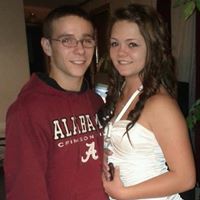
James Speck
view source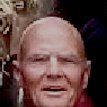
James Speck
view source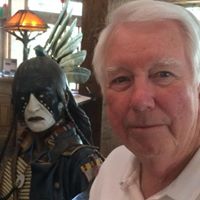
James Speck
view source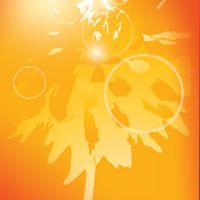
James Speck
view source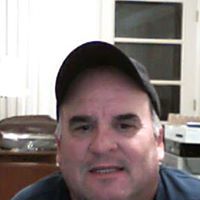
James Speck
view source
James Christopher Speck
view source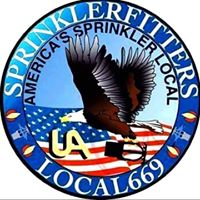
James Speck
view source
James Speck
view sourceMyspace
Googleplus

James Speck
Flickr
Youtube
Classmates

James Speck
view sourceSchools:
Benton Central High School Oxford IN 1982-1986
Community:
Lisa Leathermon, Kathy Welch-Martin, Kim May

James Speck
view sourceSchools:
Ingomar High School New Albany MS 1955-1959
Community:
Jackie Hatch

James Speck
view sourceSchools:
Tech Center High School Willoughby OH 1979-1983
Community:
Sondra Scott, Tracy Giles, Mary Kuhlenschmidt, Sarah Stimson, Deanne Balausky

James Speck
view sourceSchools:
Paradise Valley High School Paradise Valley Azores 1977-1981, La Paz Junior High School Laguna Hills CA 1979-1983
Community:
Esme H, Rich Campbell

James Speck
view sourceSchools:
Saint Scholastica School Detroit MI 1948-1952
Community:
Bryce Johnston, Timothy Duggan

James Speck, Reed City Hi...
view source
James Speck, Avon High Sc...
view source
James Speck, St. Mary's C...
view sourceNews

Nobel Prize goes to co-founder of Fremont light company
view source- Khosla persuaded Nakamura, DenBaars and their colleague James Speck to found a company. He was, and is, convinced that their particular variation on LEDs the only one to use gallium nitride crystals on a substrate made of the same material was the best available.
- Date: Oct 07, 2014
- Category: Sci/Tech
- Source: Google

Intricate Experiment Reveals Cause of LED Droop
view source- Now, a definitive measurement of this complex process has been accomplished by James Speck and Claude Weisbuch of UCSB, in collaboration with colleagues at cole Polytechnique in France. The achievement, which could help optimize cost per lumen, could put the technology back into the spotlight
- Date: Apr 24, 2013
- Category: Sci/Tech
- Source: Google
Get Report for James S Speck from Santa Barbara, CA, age ~65



















